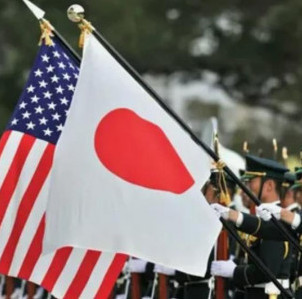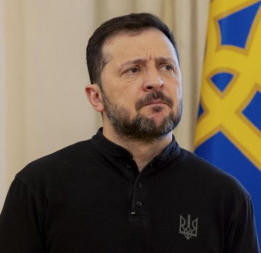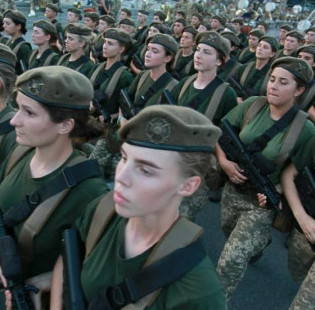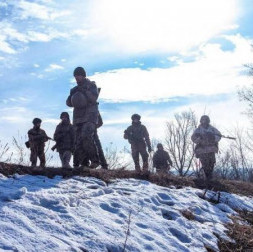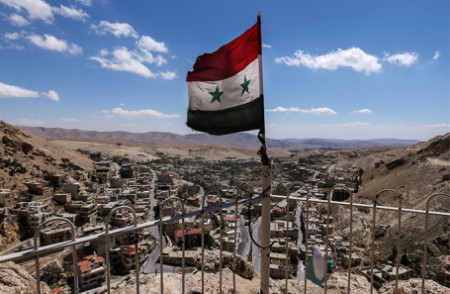
- Press review: US suspends USAID aid to Central Asia while Hamas visits Moscow again
- Press review: US urges elections in Ukraine as Trump enforces tough import tariffs
- Press review: NATO increases defense spending as Russia-Germany trade turnover falls
- Press review: Kiev may lose military aid while Trump
As of the night of October 30, 2023, the military-political situation in the Syrian Arab Republic (SAR) was marked by a further escalation of military actions by Israel, the United States, and their Western allies.
In response to October 28 air strikes carried out "on President Joe Biden’s personal order" against "weaponry manufacturing enterprises" outside Al-Bukamal in Syria’s eastern Deir ez-Zor governorate, October 30 saw US military contingent once again come under fire nearby the Koniko gas field.
The Asharq Al-Awsat regional outlet reported rockets exploding both inside and around the facility. Military leaders of the Islamic Front for the Iraqi Resistance have claimed responsibility for the attack. In turn, Libya’s Al Mayadeen TV channel caught the Americans in a lie, saying there were no warehouses or military production facilities at the border crossing with Iraq, and bombs rained down on two Shiite militia camps.
Notably, the last ten days have seen Iraqi Shiite armed groups launch over 20 attacks on US military facilities in Al-Hasakah, Deir ez-Zor and Damascus governorates, and their combat activity is on the rise.
Disturbances are also observed in the country’s southern part. Thus, the Israeli Air Force artillery and aircraft fired a series of strikes on Iraqi militia positions in Deraa on October 28, allegedly responding to shelling of its own northern regions. Fire and strikes came from the Israeli-occupied Syrian Golan Heights.
Admittedly, with another round of Palestinian-Israeli conflict in the Gaza Strip, a potent IRGC-controlled Shiite militia force was redeployed from Iraq to Syria to frustrate any potential provocative actions by pro-American Kurdish formations (up to 40,000), Islamic terrorists and radicals controlled by Turkey (about 30,000), and the remaining Pentagon-controlled ISIS (banned in Russia) groups accounting for some 15,000 militants.
In Syria’s neighboring Lebanon, armed confrontation between pro-Iranian Hezbollah and the Israeli army has been intensifying in the border area. The Lebanese Shiite carry out systematic attacks on Israel’s military patrols that cross the border line and enter the neighboring state’s territory, which causes casualties with both sides. According to Asharq Al-Awsat, the Israelis lost several tanks and AMPVs because of anti-tank guided missile systems.
Israeli artillery has stepped up shelling of Hezbollah’s localized positions in southern Lebanon, with aircraft having returned to bombing raids after a long break.
From day one of the Gaza conflict, Lebanon’s Shiite military and political leadership declared support for HAMAS, the Palestinian Islamic Resistance movement, but refrained from launching dynamic actions against Israel. Hezbollah is deemed capable to open a second front of this war in case of an armed attack by Israel and/or the United States on Iran, Syria or Russian military bases in Tartus and Khmeimim.
Iranian leaders are closely monitoring regional developments, having brought the national armed forces and the IRGC into a higher state of readiness. Tehran has unequivocally sided with the Gaza Palestinians and declared commitment to support them militarily in case of attacks or aggressive threats by Israel, the United States or their Western allies on Iranian military and other kind of facilities.
The Pentagon and a number of its NATO allies have brought to the Mediterranean and Red Seas a sizable warship grouping with deck-based aircraft and sea-launched cruise missiles — the biggest in bloc’s history. Besides, the transfer of strategic aviation bombers, airborne early warning aircraft and tanker planes is going on at airfields of Greece and Italy. US Air Force transport aircraft has intensified military cargo deliveries to Israel and Arab Peninsula countries.
Commanders of the People's Liberation Army of China (PLA) have sent a six-ship-strong naval task force to the Mediterranean for added security of Russian military bases in Syria.
The high-alert Syrian government army cooperates with Russian troops in the defensive area, mainly performing missions to deter pro-Turkish and pro-American armed formations from potential military-political destabilization.
The Russian command in Syria is closely monitoring things in both the country and the region. The Russian Aerospace Defense Forces are constantly patrolling the airspace to intercept enemy aircraft. In cases of urgency, Russian aircraft launch incidental missile and bomb attacks against positions, pileup of forces, and military facilities of terrorists and Islamic radicals in north-western and eastern areas of Syria’s central part.




